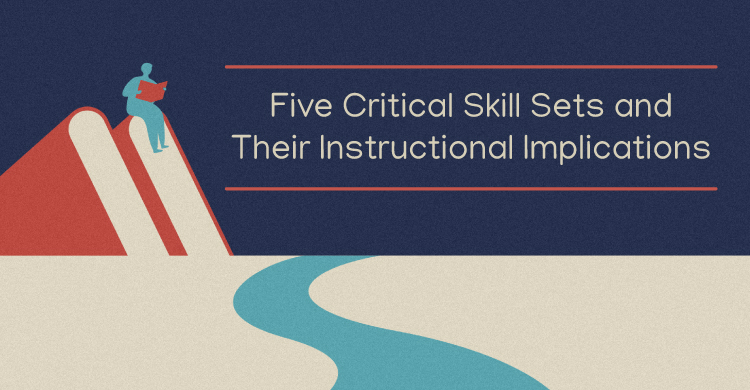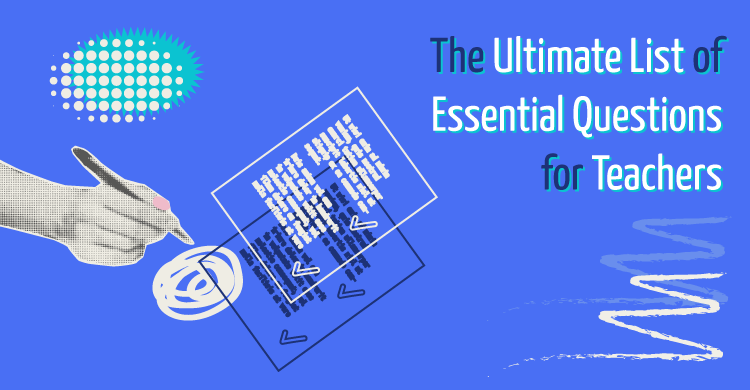Elliott Seif is the author of Teaching for Lifelong Learning: How to Prepare Students for a Changing World.
What skills will help increase the likelihood that students will be successful in both school and life? What abilities will help prepare students for living in and adapting to a world of uncertainty? From major societal and technological shifts to climate change, AI, and more, students today live in a rapidly transforming world.
In addition to metacognitive skills, such as time management and planning, I believe that there are five key “learning to learn” skill sets that will increase school success and better prepare students for a lifetime of change.
How to develop understanding
Students know how to:
- Sort, categorize, compare, and contrast information and data
- Develop concepts, theories, principles, and hypotheses to increase vocabulary and content knowledge
- Create patterns, build connections, and develop relationships among information and data
- Create narratives, stories, timelines, and visual organizers such as charts and diagrams
- Summarize and explain, in their own words, key ideas, concepts, theories, principles, and hypotheses
- Form theories and examine and explain the evidence that supports them
How to conduct research
Students are able to use many approaches, including the latest technologies, to:
- Search for information/data
- Read for understanding
- Listen to and comprehend many different types of texts and media sources
- Find and evaluate information and data for its usefulness, reliability, and validity
How to think critically and creatively
Students are able to:
- Analyze, interpret, and draw conclusions
- Represent and synthesize information, ideas, and quantitative data in many different formats, including visual and graphic
- Form opinions backed by logical argument and evidence
- Solve complex problems creatively, and learn how to think outside the box
How to communicate effectively
Students are able to:
- Describe and explain ideas to others
- Represent and share data and ideas in many different presentation modes, such as oral and written formats
- Develop arguments with claims and evidence
- Listen and participate effectively in discussions
- Write narratives, stories, letters, and other written modes to communicate thoughts and ideas to others
How to collaborate
Students know how to work together as they:
- Conduct research
- Think critically and creatively
- Complete projects and solve problems
The teaching of these five skill sets should start in preschool, when students are encouraged to ask questions about the world around them, observe and describe what they see in pictures, find information and ideas, have open-ended discussions about books that are read to them, and play in ways that encourage categorizing and analysis.
As students progress through the grades, textbooks should be treated as searchable texts, and research opportunities will help students find and evaluate new resources, process information, and read for understanding. As appropriate, students can analyze data, draw conclusions, apply learning to new and novel situations, make presentations, and write, write, write—followed by even more writing.
As students learn and practice these skills, they’ll also learn attitudes and behaviors that they will need for the future, such as curiosity, perseverance, learning from error and failure, risk-taking, and improving their work.
Activities that Promote Development of the Five Skill Sets
Below are just a few examples of the wide variety of strategies that can make a big difference in how students learn and apply the five skill sets on a regular basis.
Develop understanding
Guided concept development and attainment activities provide students with opportunities to define, sort, group, categorize, classify, label, and build relationships among multiple sets of information, ideas, and data.
Read for Understanding strategies help students go below the surface and find the deeper meaning behind what is being read. They are designed to improve reading comprehension and the understanding of what is being read for all students at all levels in all subject areas. They include before/during/after reading strategies as well as second-draft reading, interpretive discussions of text, reflective logs, and many other similar methods. [1]
Conduct research
In search activities, students are asked to find one or more readings, data sources, or videos that supplement a current learning situation, such as finding and using helpful search terms, determining which sources of information are reliable, and reading and interpreting data meaningfully. When several readings or data sources are found, students are able to figure out how to compare and contrast them and find the essential information, ideas, or data in each.
Close reading strategies enable students to read more deeply as part of their daily activities. Instead of teachers providing answers and feeding students information, students are asked text-dependent questions that enable them to justify their opinions or perspectives using evidence from the text. Students are asked to “read like a detective,” to reread, to analyze paragraphs sentence by sentence, to consider the nuances of a text, and to analyze data sources. [2]
Thinking critically and creatively
Visual organizers (also called graphic organizers) promote deeper and more flexible thinking. Through visual analysis, students are able to take learning apart, organize information and data for decision-making, or weave a web of information and ideas. Students use visual organizers to help them think more flexibly and to extend and deepen their thinking. [3]
Brainstorming strategies help students learn to think outside the box. Students are provided with an open-ended problem or challenge with many different solutions. They are asked to create as many alternative ways to solve the problem as they can, using DOVE (Defer judgment; Offbeat ideas encouraged; Vast number of ideas sought; Expand on others’ ideas)as guidance.
Students are asked to work in small groups to come up with as many ideas as they can, with one person acting as the recorder of all the ideas. The class then shares their ideas and makes their list of alternatives as long as possible. Then they may be asked to indicate which five ideas are the most logical, the most unusual, the most interesting, and/or the best to solve a problem. Several ideas might be applied to try to solve the problem, and students should consider what would happen if the alternative solutions were put into effect.
Effective communication
Open-ended writing assignments enable students to learn how to write narratives, stories, research papers, op-ed pieces, position papers, letters to the editor, and more. Each type of open-ended writing assignment has its own set of skills associated with it. Teachers in different content areas might want to concentrate on one or more of these types of open-ended assignments and teach skills specifically associated with them.
In five-minute explanation activities, students are asked to briefly explain in their own words a concept, big idea, understanding, or principle that has been examined in class. This assignment can also help to indicate what students have learned, any misinterpretations, etc. Teachers might also ask students to read their answers out loud for class discussion—or students could share their explanations in pairs.
Collaboration
Discussion skills—such as listening to other perspectives, civilly replying to diverse points of view, accepting and learning from others, and more—can be taught and learned through active listening skill development in both small and large groups.
Collaborative skill development occurs when teachers provide small groups of students with a task that requires students to work together, such as putting together a puzzle, solving a problem, or completing a project. Each small-group task requires students to work together and contribute to the whole.
Integrating These Skill Sets into Instructional Practice
The good news is that teachers with limited time for developing these skill sets can select which are a priority for their classrooms and integrate those that are chosen into their teaching. The use of a four-phase framework for instructional planning, described in the blog “Using a Four-Phase Instructional Model to Plan and Teach for Lifelong Learning” and in chapter two of my book, Teaching for Lifelong Learning, can help teachers figure out how to integrate skill development on a regular basis. For example, in the first phase (“setting the stage”), students can discuss essential questions and interesting challenges that increase opportunities for research and thinking. During the “building the foundation” phase, students can specifically learn and practice skills such as how to categorize and sort information, read for understanding, and do research. Students can further their learning and apply these skills through an independent assignment or project as part of the “apply and deepen learning” phase. Then, in the “closure” phase, students can be asked to summarize and synthesize learning and communicate their results to others.
Many additional resources are available that can help you find activities for learning and practicing these skill sets. And, ironically, mastering these skills should also help students to perform better on more traditional tests, which is crucial for measuring classroom and school success.
Endnotes
[1] Many additional “reading for understanding” activities can be found in the following sources:
Gallagher, K. (2004). Deeper reading: Comprehending challenging texts, 4-12. Stenhouse Publishers.
Minero, E. (n.d.). Driving deep reading comprehension in K–5. Edutopia.
Schoenbach, R., Greenleaf, C., & Murphy, L. (2000). Reading for understanding: A guide to improving reading in middle and high school classrooms. Jossey Bass.
[2] For further insight into text-dependent close reading, see:
Hank, C. (n.d.). Defining “deep reading” and “text-dependent questions”. Turn On Your Brain.
[3] There are many sources of information on graphic organizers in addition to my personal suggestion:
Urquhart, V., & Frazee, D. (2012). Teaching reading in the content areas: If not me, then who? (3rd Edition). ASCD.






